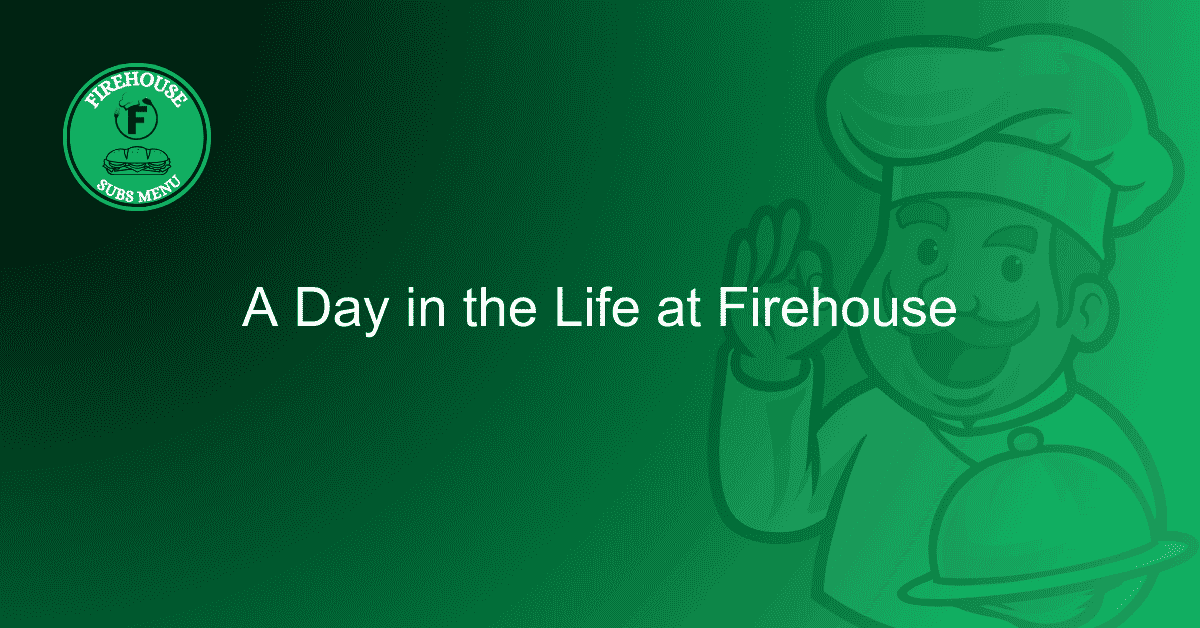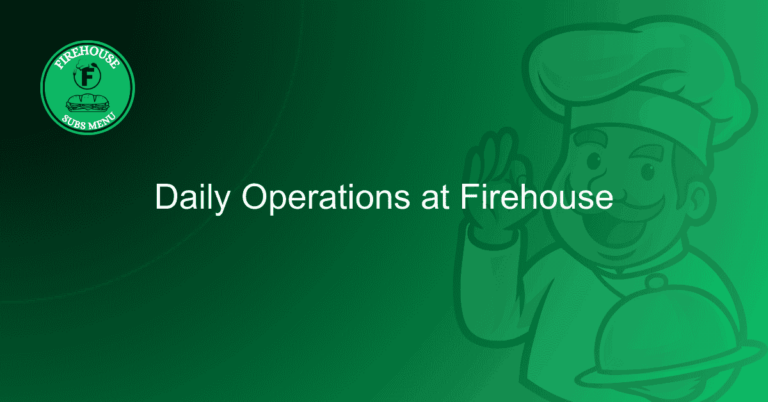A Day in the Life at Firehouse
A day in the life at a firehouse is filled with a unique blend of camaraderie, responsibility, and the ever-present readiness to respond to emergencies. Firefighters begin their shifts with a rigorous routine that not only includes physical training but also preparing the firehouse for any potential calls. This involves checking equipment, maintaining fire trucks, and participating in team briefings to discuss strategies and updates. The atmosphere is dynamic, with team members sharing stories and laughter, which fosters a strong sense of community and support among the crew. Each moment spent together strengthens their bond, making them not just colleagues but also a family united by a common goal: to protect and serve their community.
As the day unfolds, the firefighters engage in various drills and training exercises to hone their skills, ensuring they are always prepared for the unexpected. Alongside their physical duties, they also take time to connect with local residents, promoting fire safety and community awareness. At the heart of this daily routine is the shared commitment to their mission, which resonates throughout the firehouse. Food plays an essential role in their camaraderie, with team members often sharing meals that reflect their diverse backgrounds. The Firehouse Subs Menu is a favorite among firefighters, offering hearty sandwiches that provide the sustenance needed to keep up with the demands of their job. This daily mix of teamwork, training, and community involvement not only defines their workday but also highlights the essential role that firehouses play in fostering safety and support in their neighborhoods.
A Glimpse into Firehouse Life
The daily life of firefighters is not just about battling blazes; it encompasses a rich tapestry of routines, camaraderie, and community engagement. This article takes you through a day in the life at a firehouse, showcasing the dedication and teamwork that underpin this noble profession. From early morning workouts to engaging meals that reflect their diverse backgrounds, firefighters embody a culture of support and resilience. Join us as we delve into the intricacies of life at the firehouse.
Morning Routine and Physical Training
Every day at the firehouse starts early, with firefighters embracing a rigorous morning routine that sets the tone for the day. Physical training is paramount, as it ensures that firefighters maintain the strength and endurance necessary to perform their demanding duties. Morning workouts often include a combination of cardio exercises, strength training, and agility drills, tailored to challenge the team and promote fitness.
- Cardio Exercises: Running or cycling to build stamina.
- Strength Training: Weight lifting to enhance muscle power.
- Agility Drills: Exercises that improve speed and coordination.
This focus on fitness fosters a sense of discipline and camaraderie among team members, reinforcing their bond as they support each other in achieving their personal fitness goals. The shared experience of physical training not only prepares them for the physical demands of firefighting but also cultivates a spirit of teamwork that is essential in emergency situations.
Equipment Checks and Maintenance Procedures
After the morning workout, the team shifts their focus to equipment checks and maintenance procedures. Ensuring that all firefighting gear and tools are in optimal working condition is critical to the safety and effectiveness of the team. Firefighters meticulously inspect hoses, ladders, and protective gear, checking for wear and tear and replacing any damaged items.
- Regular Inspections: Conducting thorough checks on all equipment.
- Preventative Maintenance: Addressing potential issues before they arise.
- Inventory Management: Keeping track of necessary supplies and equipment.
This routine not only guarantees that firefighters are prepared for any emergency but also instills a sense of responsibility and pride in their work. The team understands that the safety of their community depends on their preparedness, making these checks a vital part of their daily life.
Team Briefings: Strategies and Updates
Following equipment maintenance, the firefighters gather for team briefings where they discuss strategies, updates, and any pertinent information regarding their duties. These briefings are essential for ensuring that everyone is on the same page and aware of any new developments within the community or department.
- Information Sharing: Updates on community safety initiatives.
- Strategy Development: Planning for upcoming drills or events.
- Feedback Sessions: Encouraging open dialogue about performance and improvement.
During these meetings, storytelling plays a significant role in building team camaraderie. Firefighters share personal experiences and lessons learned, fostering a supportive environment where everyone feels valued and heard. This culture of openness not only strengthens relationships but also enhances their collective decision-making, making them more effective in their roles.
Building Team Camaraderie Through Storytelling
The art of storytelling is a cherished tradition within the firehouse. Sharing past experiences, whether they are humorous or harrowing, helps to build trust and understanding among team members. These stories often serve as valuable lessons, reinforcing the importance of teamwork and communication during emergencies.
Moreover, storytelling is a way for firefighters to connect with their shared history and experiences, creating a bond that transcends their duties. This culture helps newcomers to feel welcomed and integrated into the team, ensuring a smooth transition into the demanding environment of firefighting.
Creating a Supportive Work Environment
A supportive work environment is crucial in the high-stress world of firefighting. Team members are encouraged to look out for one another, both physically and emotionally. Regular check-ins and open discussions about mental health are integral to maintaining this supportive atmosphere.
Firefighters often participate in team-building exercises and social events outside of work, which strengthens their relationships and contributes to a positive workplace culture. This camaraderie not only enhances their daily life but also ensures that they can rely on one another during emergencies.
Drills and Training Exercises Throughout the Day
Drills and training exercises are a fundamental part of a firefighter’s daily routine. Throughout the day, the team engages in various scenarios that simulate real-life emergencies. These exercises are designed to keep their skills sharp and to prepare them for any situation they may encounter.
- Live Fire Training: Practicing techniques in controlled environments.
- Rescue Drills: Simulating rescues from various scenarios.
- Hazardous Materials Training: Preparing for chemical or environmental incidents.
Through these drills, firefighters hone their problem-solving skills, learn to work under pressure, and develop a seamless communication system with their team. The hands-on experience gained during training exercises directly translates into more effective responses during real emergencies.
Engaging with Local Residents for Fire Safety
Community engagement is a vital aspect of a firefighter’s role. Throughout the day, firefighters take time to interact with local residents, educating them on fire safety practices and prevention strategies. These interactions help to foster a strong relationship between the firehouse and the community it serves.
- Fire Safety Workshops: Hosting events to educate families on fire safety.
- School Visits: Teaching children about fire safety and prevention.
- Open House Events: Inviting the community to tour the firehouse and learn more about their services.
By actively engaging with the community, firefighters not only promote safety but also cultivate trust and respect. This relationship is crucial in ensuring that residents feel supported and informed about how to prevent and respond to fire-related incidents.
Importance of Food in Firefighter Culture
Food plays a significant role in firefighter culture, serving as a means of nourishment and a way to build camaraderie among team members. Meals are often shared, and cooking together fosters a sense of unity and belonging. The act of preparing food can be a welcome break from the rigors of their daily life.
- Shared Meals: Promoting teamwork and bonding during meal times.
- Culinary Skills: Encouraging creativity and collaboration in the kitchen.
- Comfort Food: Providing a sense of comfort and normalcy amidst chaos.
Moreover, the Firehouse Subs menu is a favorite choice among firefighters. Their hearty sandwiches and flavorful options not only satisfy hunger but also reflect the diverse tastes and backgrounds of the team. Sharing meals from the Firehouse Subs menu becomes a cherished ritual that strengthens their bonds and enhances their daily life.
Firehouse Subs Menu: A Favorite Choice
The Firehouse Subs menu is celebrated for its variety, offering something for everyone. Firefighters often look forward to enjoying these delicious sandwiches during their breaks, appreciating the hearty portions and bold flavors. The menu features a range of subs, salads, and sides that cater to different dietary preferences, ensuring that every team member can find a meal they enjoy.
Whether it’s a classic meatball sub or a fresh turkey club, the Firehouse Subs menu provides comfort food that lifts spirits and fuels their demanding day. The communal experience of sharing these meals fosters a sense of belonging and reinforces the family-like atmosphere within the firehouse.
Diverse Meals Reflecting Team Backgrounds
Firefighters come from various cultural backgrounds, and this diversity is beautifully reflected in the meals they share. Team members often introduce their favorite recipes, creating a melting pot of flavors and culinary traditions that enrich their daily life.
From hearty stews to spicy dishes, the variety of meals showcases the unique heritage of each firefighter. This culinary exchange not only broadens their palates but also deepens their appreciation for each other’s backgrounds, fostering a culture of inclusivity and respect within the team.
Frequently Asked Questions
This section addresses common queries about life at a firehouse, emphasizing the daily routines, responsibilities, and community involvement of firefighters. Insights into the Firehouse Subs Menu also highlight the importance of sustenance in fostering camaraderie among team members.
What is a typical day like for firefighters?
A typical day for firefighters includes physical training, equipment checks, and team briefings. They engage in drills to maintain preparedness for emergencies. This routine not only enhances their skills but also strengthens their bond as they work together to protect their community effectively.
How do firefighters maintain their equipment?
Firefighters regularly check and maintain equipment to ensure it functions properly during emergencies. This includes inspecting fire trucks, testing hoses, and ensuring all safety gear is in excellent condition. Such diligence is crucial for operational readiness and the safety of both firefighters and the community they serve.
What role does food play at the firehouse?
Food is an essential part of life at the firehouse, serving as a way to foster camaraderie among firefighters. Team members often share meals that reflect their diverse backgrounds. The Firehouse Subs Menu offers hearty options that provide the necessary nourishment to keep firefighters energized throughout their demanding shifts.
How do firefighters engage with the community?
Firefighters actively engage with local residents to promote fire safety and awareness. Through community events and educational programs, they share important safety tips and foster relationships that help build a supportive environment. This connection reinforces their role as protectors and enhances community trust and collaboration.
Why is teamwork important in a firehouse?
Teamwork is vital in a firehouse, as it ensures effective communication and coordination during emergencies. Firefighters rely on each other’s strengths and skills to respond quickly and efficiently to incidents. This collaborative spirit not only enhances operational effectiveness but also creates a strong sense of family within the crew.






